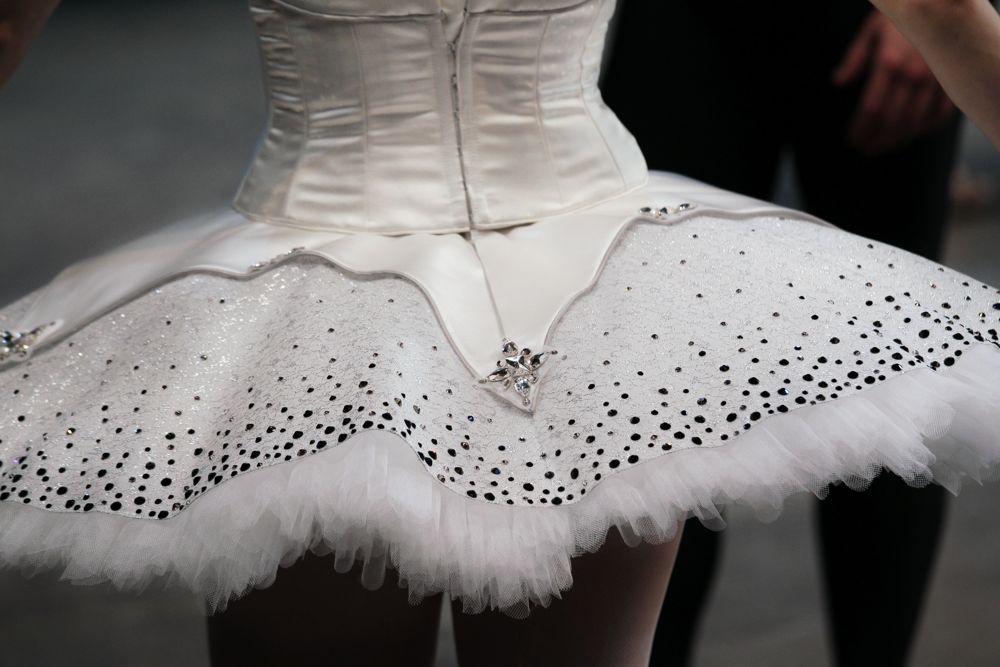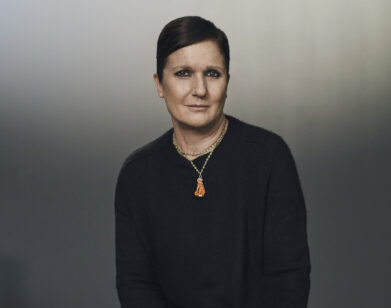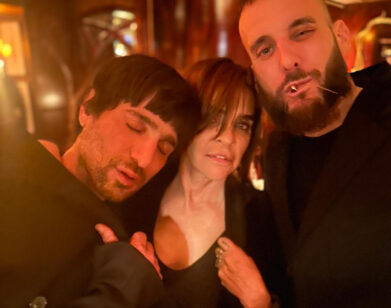NYC Ballet’s New Elements of Style
Ballet performances often conceal exertion, making every move appear divine even while gravity pulls dancers down to earth. Outfitting these performances is just as deliberate. Costume designers, both artists and engineers, carefully choreograph structural elements to serve both frill and utility. Costumes tell the story, but they also provide the binding.
As such, George Balanchine’s Symphony In C gets a rebound this spring: the New York City Ballet has partnered with Swarovski to introduce newly designed costumes with the brand’s signature accents. The result is an array of ethereal, effortless-looking costumes that belie the strategic architecture of bodices, precise aerodynamics of layered tulle, and the many calculations made in Marc Happel’s NYC Ballet Costume Shop.
Serving as costume designer for seven years, Happel leads a shop concerned with restoration rather than replacement, often tweaking costumes constructed decades earlier. Apart from typical wear and tear, the evolution of ballet and those who perform it presents unique challenges for Happel and his team. “It is a challenge when you’re dealing with older costumes from the ’40s and ’50s, for a classical or period ballet, that are very structured and very boned,” Happel said. “We have to adapt them to the dancers we now have, making fabrics more pliable to allow them more mobility.”
Originally performed in 1947, Symphony In C is particularly well-suited for Swarovski’s touch. “The ballet was originally called Le Palais de Cristal, or Crystal Palace. I thought that was the perfect place for the collaboration to happen,” Happel said. Incorporating over 105,000 crystals and stones into the performance was a privilege, albeit sometimes daunting for the costume shop. “It’s great to suddenly have Swarovski put in front of you, but you don’t want to turn these costumes into little mirror balls. It’s about finding a balance and seeing how it transfers on stage—where there is too much and which details disappear.”
Maintaining continuity with the past while adding modern embellishments is a chief concern for Happel, who used stones and crystals to enhance more traditional elements. “We wanted to maintain the original color story. The performance is done in front of a beautiful blue scrim, and we brought some of that blue into the costumes with Swarovski stones,” he said.
Indeed, crystals illuminate the performance without obscuring detail. Stones are placed with great care not only on individual costumes, but also according to dancers’ geography on stage. Those center stage are highly adorned, illuminating and giving life to the surrounding assembly. Principal girls wear tiaras designed by jewelry designer Robert Sorrell, and a faint flicker follows them seemingly prolonging their suspension.
Rather than adding weight, the Swarovski embellishments bring levity to the performance. Every twinkle is a wink to the audience, making already angelic dancers absolutely celestial.







